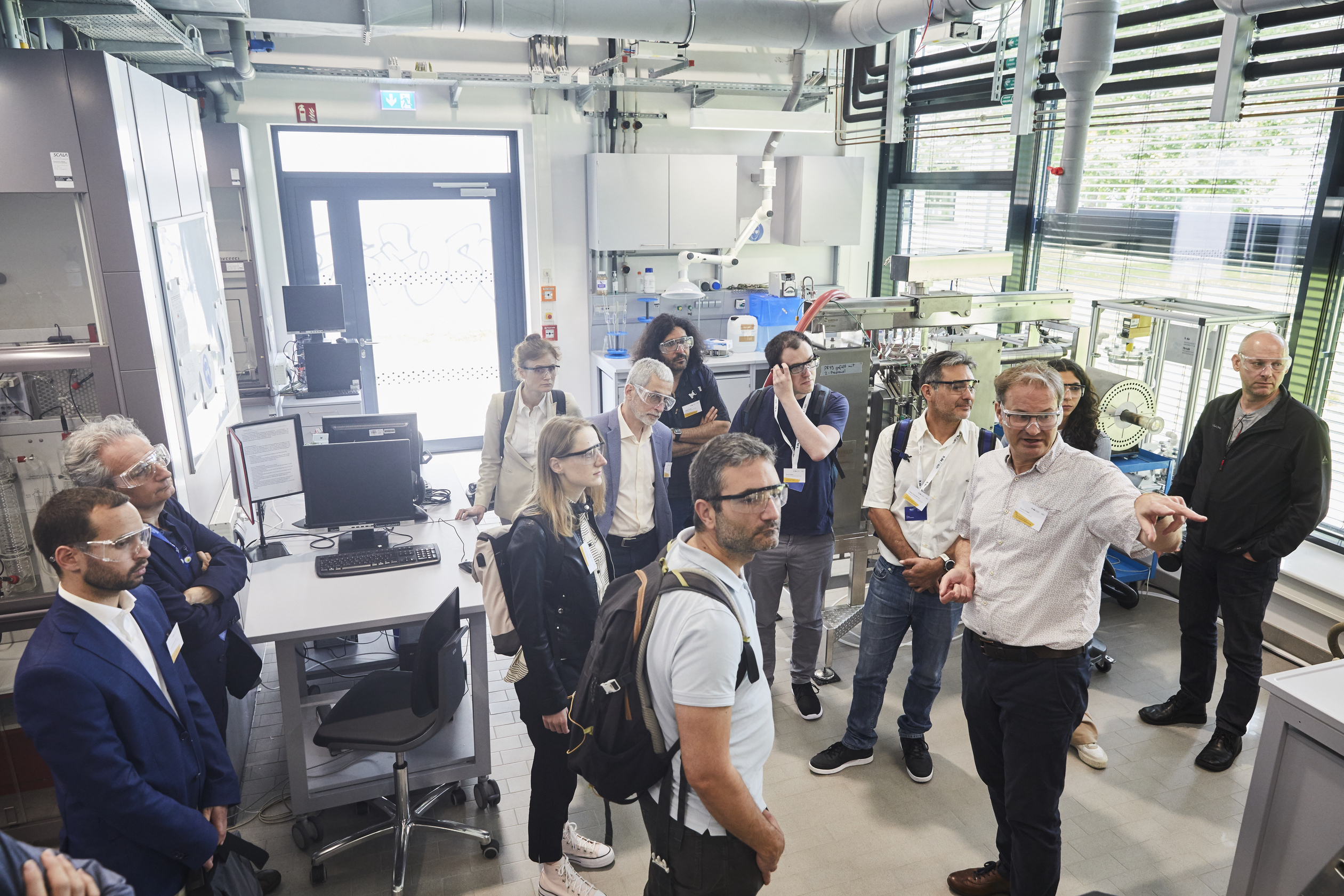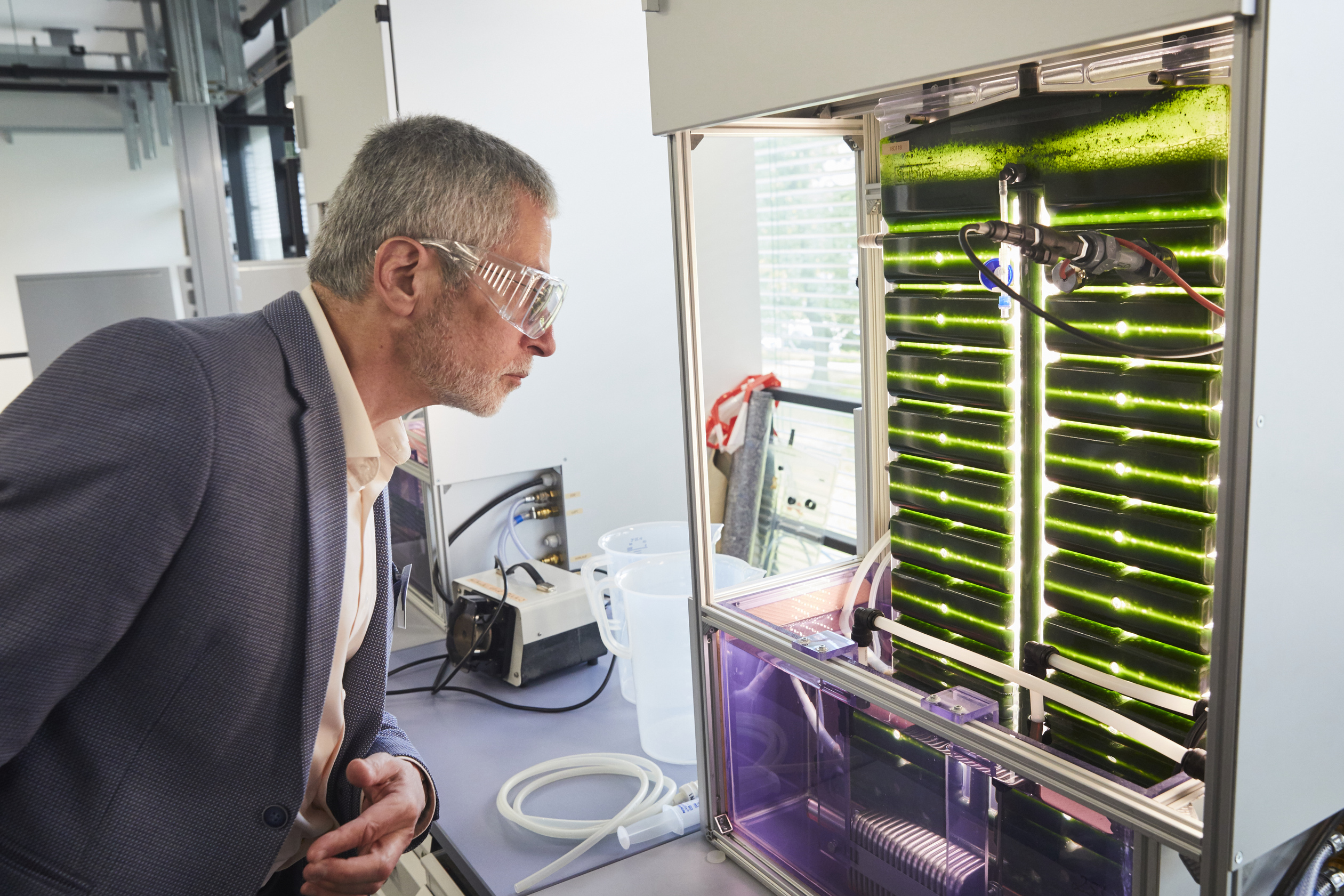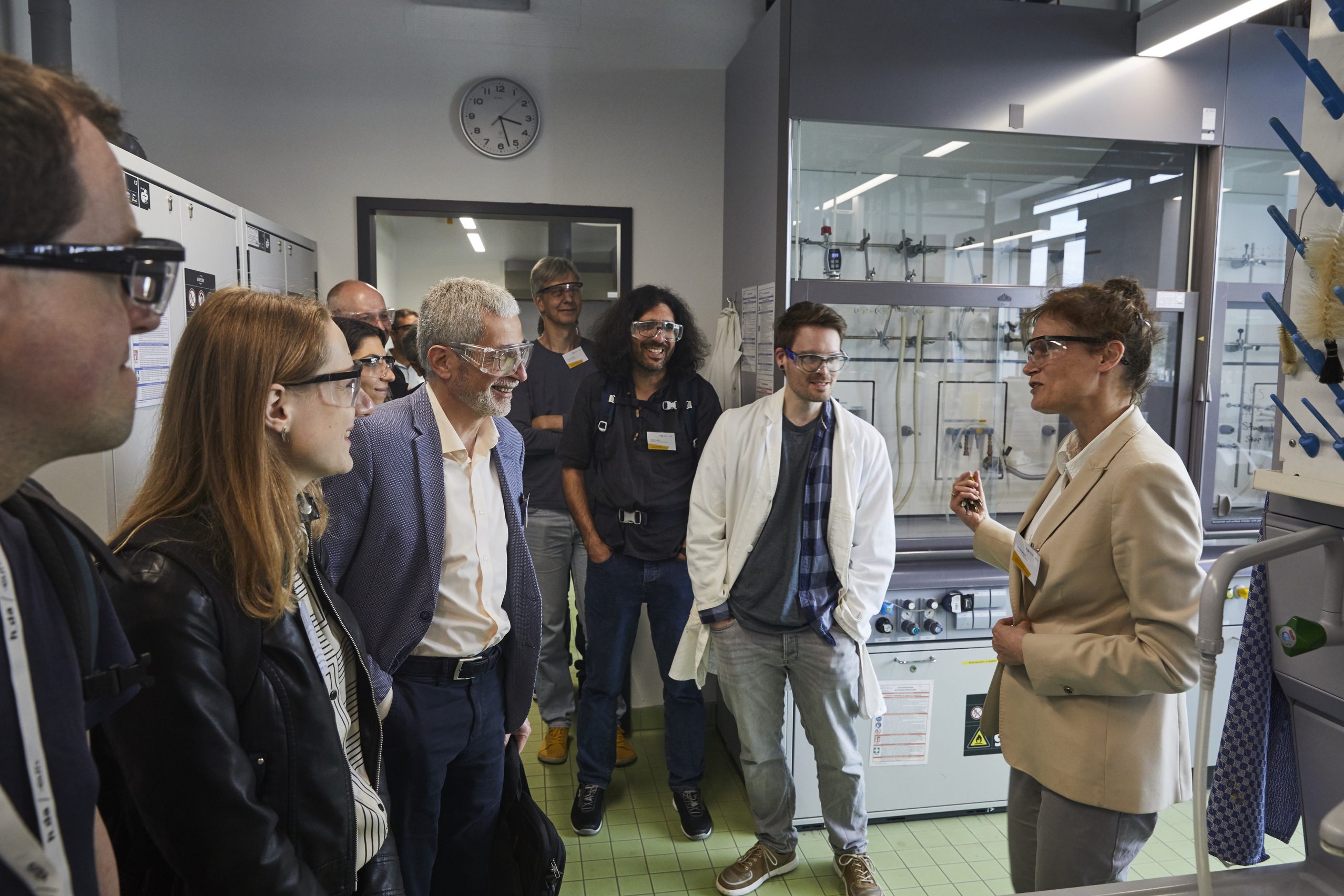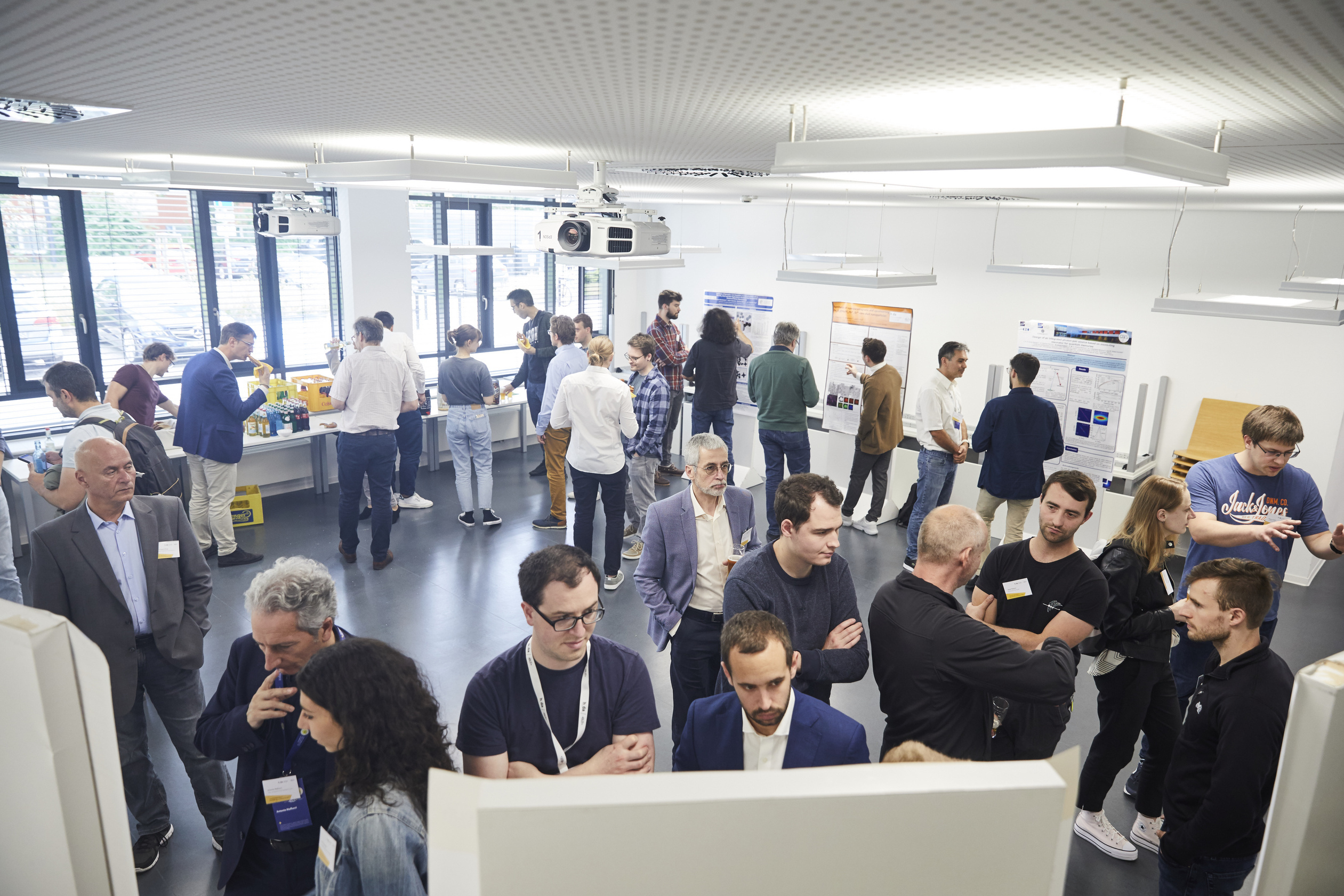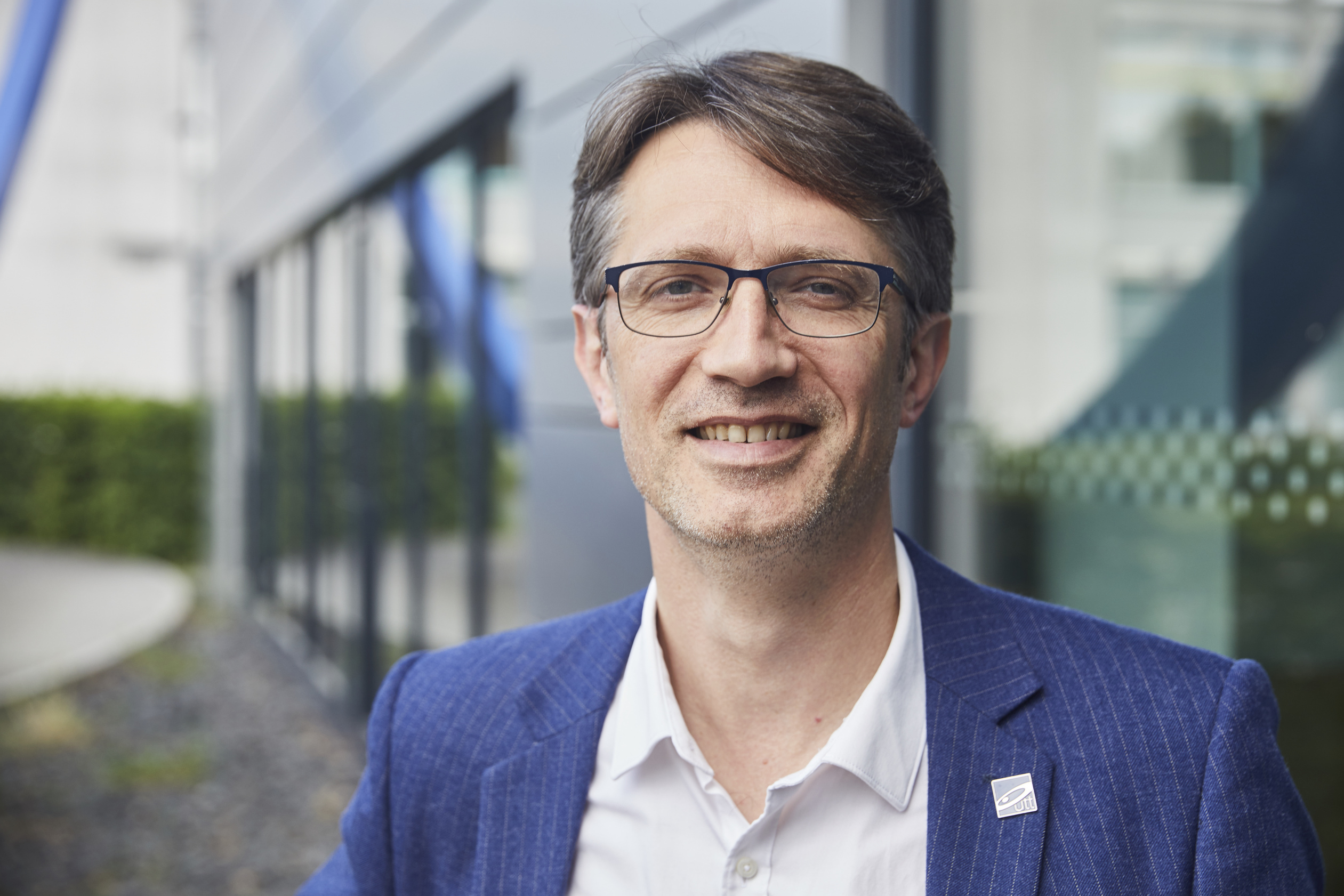EUT+ Nanotechnology

30 nanotechnologists came together at Darmstadt University of Applied Sciences in May to create a new basis for collaboration within the “European University of Technology” (EUT+): researchers from seven of the nine EUT+ partner universities participated in the two-day workshop. The aim is to establish a joint “European Research Institute”.
By Christina Janssen, 18.6.2024
The meeting was organised by Professor Frank Schael and Professor Christina Graf from h_da’s Faculty of Chemical Engineering and Biotechnology as part of “EUT+ Darmstadt Week”. The programme included a scientific workshop, a poster session, lab tours and field trips, and – just as important – personal exchange within the group and getting to know each other. “At last,” Frank Schael is pleased to say, and he is not the only one, as the “Nano Meeting” in Darmstadt was the first to take place in a face-to-face format. “It was fantastic to meet colleagues in person instead of online,” endorses Professor Catalin Popa, an expert in biomaterials and biotechnologies at the Technical University of Cluj-Napoca in Romania. “The workshop was a great opportunity to get to know each other better, both personally and professionally.”
And this turned out to be very effective: the researchers already have some quite big plans for further collaboration. They would like to explore possibilities for interconnecting teaching at Bachelor’s and Master’s level within the EUT+ alliance more closely. “We could set up a joint Master’s study programme in the foreseeable future,” believes Schael. Another idea is to establish a graduate school similar to the one with a strong nanotechnology focus at the Université de technologie de Troyes. The meeting, which was co-organised by PhD student Benjamin Steup, was a good starting point for this and, on closer inspection, implementation even easier than initially thought, reports Frank Schael: “We will find the right solutions.”
Sights set on founding a “European Research Institute”
The name of this proactive group of scientists that has now been begun work in Darmstadt is EUTINN. The acronym stands for “European University of Technology Institute of Nanomaterials and Nanotechnologies”. The next step is the institute’s formal foundation, and corresponding plans assumed concrete shape in Darmstadt. The EUTINN team is ready to go and just waiting for the last formalities to be clarified. A complex process, as it is completely new ground for the EUT+ university alliance – like so many things on the way to becoming a “European University”, which the nine partner universities from Spain, France, Italy, Ireland, Cyprus, Bulgaria, Romania, Latvia and Germany want to create. Setting up joint research institutes is an important building block in this process, as they will make it easier to apply for external funding as well as facilitate researcher mobility and the sharing of resources across several EUT+ campuses.
For Christina Graf, h_da professor and one of the meeting’s hosts, this is one of the key advantages of EUT+. For the researcher, who specialises in the synthesis and the characterisation, i.e. the exact description, of the physical and chemical properties of inorganic nanoparticles, being part of the university alliance opens up entirely new possibilities: “It will be very useful for me to have an EUT+ institute especially for nanotechnology because only a few people here at h_da are working on this topic. Although there are points of reference with colleagues from other faculties for submitting joint applications and working together, EUTINN will broaden my options significantly. In Troyes, for example, many people are working in this field and the laboratories there are very well equipped.”
Hocus lotus…and many other practical applications
The EUTINN researchers would like to make use of such synergies within EUT+. But what exactly are “nanomaterials” and what are they used for? Professor Frank Schael’s answer: “We are talking about particle sizes between 1 and 100 nanometres, that is 10-9 metres, or one billionth of a metre, to 10-7 metres. These can be tiny spheres, cubes, stars or structured surfaces with ‘hills and valleys’ on this scale.” The best-known application is materials with a “lotus effect”: house paint that repels water and dirt, or coated textiles that are resistant even to red wine or tomato sauce. The principle originates from the plant kingdom, was copied from the self-cleaning leaves of the lotus flower and is applied in many different areas – from tablecloths to satellite technology.
The EUTINN meeting in Darmstadt included 16 presentations on current research projects in four sessions. Topics ranged from basic research to the development of new applications. One team presented its work on the quantum chemical description of nanoparticles, while other contributions focused on the use of nanoparticles in medicine – as “transport vehicles” for pharmaceutical substances in the human body, or as contrast agents for MRI scans. Nanomaterials are used as high-tech coatings, for example in space technology to shield satellites from cosmic radiation. Another topic was the production of metal alloys with customised resistance and conductivity properties. And these are just a few examples. “The scientific programme was really great and far exceeded the participants’ expectations,” says organiser Frank Schael, adding that the wide range of topics underlines how many researchers within EUT+ are dealing with nanotechnology. “With the EUTINN initiative, we are clearly in the right place at the right time."
Beer, pretzels – and many curious faces
Curiosity and openness were also clear to see during the lab tours and the poster session with (non-alcoholic) beer and pretzels at h_da’s Faculty of Chemical Engineering and Biotechnology: “There were questions, discussions and a relaxed exchange in small groups,” reports Schael. The guests were particularly impressed by the possibilities offered by the pilot plant facility, the faculty’s main laboratory, he says, as well as by the many opportunities at Darmstadt University of Applied Sciences to collaborate with industrial partners – a special feature of h_da as a university of applied sciences, whose lecturers generally work in industry for a few years before joining the university and maintain correspondingly close contacts in their respective sectors.
All the participants were given a “Book of Abstracts” from the workshop, which is now being prepared for publication as a regular book – a special kind of “souvenir”. “We received a lot of positive feedback from all the participants,” reports Frank Schael. That so many were able to attend in person is by no means the general rule. Collaboration within such a European university alliance is enriching, but also challenging, explains Professor Christophe Couteau, nanotechnology expert from the Université de technologie de Troyes, the coordinator of the EUTINN group: “EUT+ is a large alliance, we are unable to meet in person very often because everyone is pretty busy – and then there is EUT+ on top. It’s not so easy to get new collaborative projects up and running.” The big advantage is that the members of the various groups complement each other extremely well – thanks to their backgrounds in their specific subjects, specialisations and the research infrastructure at each university. According to Catalin Popa from Romania, this further strengthens the individual research groups: “Collaboration within EUTINN is a great opportunity to work closely together and, for example, also to share equipment.”
A boost for joint projects in the future
Christophe Couteau from Troyes says that thanks to the meeting everyone now has an overview of which group is working on which topics and that this creates a good foundation for submitting further joint research proposals at EU level. “Moreover, we have developed ideas about how we can expand collaboration through reciprocal research visits by our doctoral students and the joint supervision of dissertations.” Catalin Popa from Romania, whose university, with over 22,000 students, is one of the largest in the EUT+ alliance, is already supervising a dissertation in cooperation with Troyes. He has now also identified partners for concrete projects among his colleagues in Darmstadt. His conclusion: “The meeting was a boost for joint research projects in the future.”
His host Professor Christina Graf can only agree: “The very next week, two teams from Troyes submitted proposals for two short projects in which h_da is involved.” The plan is to submit joint research proposals that build on these. “We also want to work together with a colleague from Dublin,” she reports. “We exchanged emails and ideas after the workshop and would like to incorporate this collaboration into a new proposal to the German Research Foundation (DFG), which we will submit in a few months’ time. We wouldn’t have come up with this idea without our colleague’s presentation here in Darmstadt.”
Incidentally, the guests also praised the meeting’s perfect organisation and the field trip to the GSI Helmholtz Centre for Heavy Ion Research, one of several top-class research institutions in Darmstadt. Not to mention “the city’s impressive Art Nouveau tradition”. So much praise is inspiring. And not only Christophe Couteau is hopeful that the EUTINN group could soon have reason to celebrate: “Our meeting was a great success. That EUTINN will officially become an EUT+ Research Institute is now within reach.” The EUTINN team will then likely be popping the corks. Stains from champagne or red wine? Of course not! Thanks to nanotechnology!
Contact
Christina Janssen
Science Editor
University Communication
Tel.: +49.6151.533-60112
Email: christina.janssen@h-da.de
Translation: Sharon Oranski
